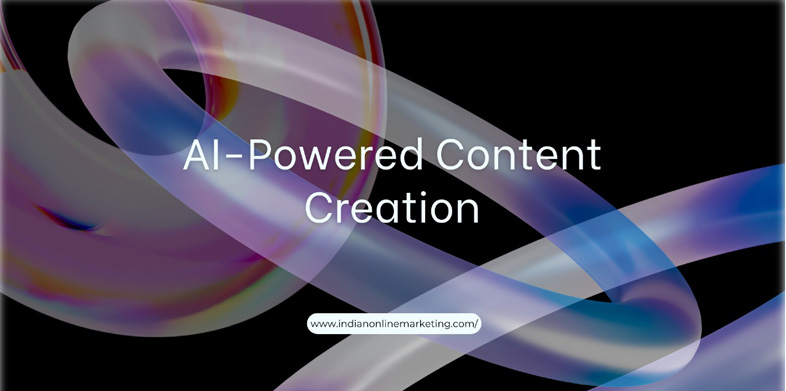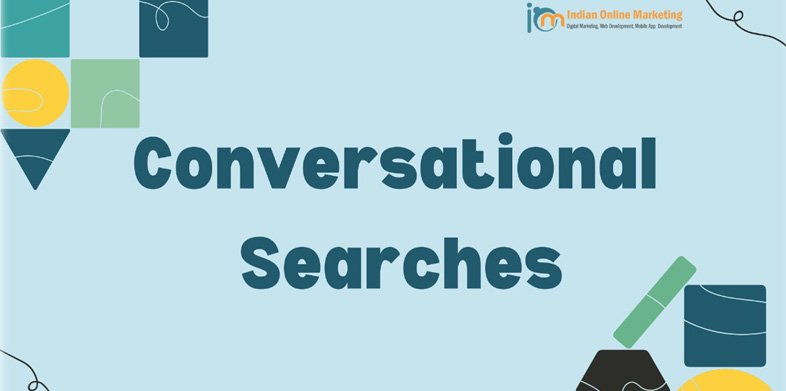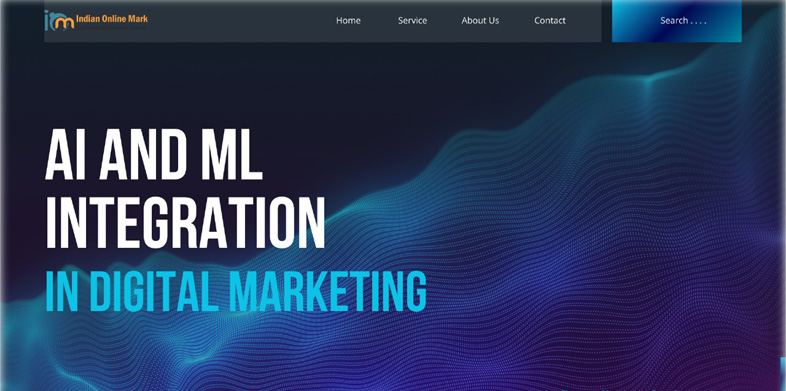AI and ML Integration in Digital Marketing: The Future is Here
Introduction
The digital marketing ecosystem is experiencing a revolution, courtesy of the fast-paced evolution of Artificial Intelligence (AI) and Machine Learning (ML). Companies that adopt these technologies are at an advantage by providing hyper-personalized experiences, optimizing campaigns, and enhancing customer interactions.
From predictive analytics to AI-generated content, chatbots, and ad optimization, AI and ML are transforming how brands interact with their audiences. In this blog, we'll explore five key areas where AI and ML are revolutionizing digital marketing.

1. Revolutionizing Customer Engagement: The Role of AI in Personalization
Why Personalization Matters
Consumers today demand that brands know their taste and provide customized experiences. 76% of customers, Salesforce states, anticipate companies to get their needs and expectations. AI accomplishes this by examining a tremendous amount of data to foresee user behavior and taste.
How AI Powers Personalization
- Dynamic Content Recommendations: Services such as Netflix, Amazon, and Spotify leverage AI to recommend content on the basis of previous behavior.
- Personalized Email Campaigns: AI solutions such as Phrasee and Persado personalize subject lines and email copy for greater engagement.
- Behavioral Targeting: AI monitors user behavior to deliver personalized ads and promotions in real time.
Case Study: Starbucks' AI-Powered Personalization
Starbucks leverages its Deep Brew AI platform to analyze customer purchase history and tastes. The outcome? Personalized drink recommendations delivered through their mobile app, resulting in higher customer retention and sales.
The Future of AI-Driven Personalization
As AI evolves, we'll see even more sophisticated personalization, such as:
- Voice & Visual Search Optimization
- Hyper-personalized AR/VR shopping experiences
- AI-powered loyalty programs

2. Predictive Analytics: Anticipating Consumer Behavior with Machine Learning
What is Predictive Analytics?
Predictive analytics uses historical data, ML algorithms, and statistical modeling to forecast future consumer actions. Marketers use these insights to optimize campaigns, reduce churn, and boost conversions.
Applications in Digital Marketing
- Customer Lifetime Value (CLV) Prediction: AI models predict the amount of revenue a customer will bring over time.
- Churn Prediction: Flags at-risk customers so that brands can intervene proactively.
- Demand Forecasting: Enables e-commerce brands to manage inventory and promotions effectively.
Tools Leaning on Predictive Analytics
- Google Analytics 4 (GA4): Applies ML to predict user behavior.
- IBM Watson: Delivers predictive insights from customer data.
- HubSpot's Predictive Lead Scoring: Ranks leads on how likely they are to convert.
Case Study: Amazon's Anticipatory Shipping Model
Amazon's AI forecasts what people will purchase before they even click "buy," so they can ship ahead of time to local warehouses—reducing delivery times significantly.
The Future of Predictive Analytics
- Real-time behavioral forecasts
- Integration with IoT for more intelligent suggestions
- AI-based sentiment analysis for tracking brand sentiment

3. AI-Powered Content Creation: Revolutionizing Marketing Stories
The Emergence of AI-Generated Content
Content is king, but producing quality, compelling content at scale is difficult. AI tools such as ChatGPT, Jasper, and Copy.ai are revolutionizing the process by producing:
- Blog posts
- Social media captions
- Product descriptions
- Ad copies
How AI Helps Content Marketing
- SEO Optimization: Frase.io and SurferSEO leverage AI to recommend keyword-dense content.
- A/B Testing for Headlines: AI tests several options to find out which one performs best.
- Multilingual Content Generation: AI translates and localizes content in seconds.
Case Study: Washington Post's AI Reporter "Heliograf"
Heliograf produced more than 850 stories in its first year, writing about sports and election returns—liberating reporters to work on in-depth reporting.
The Future of AI in Content Creation
- AI-produced video scripts and voiceovers
- AI-powered video editing
- Interactive AI storytelling
4. Chatbots and Virtual Assistants: Revolutionizing Customer Service in the Digital Era
Why Chatbots Are a Game-Changer
- 24/7 Customer Support: AI chatbots respond instantly, cutting response times.
- Cost Effectiveness: Eliminates the requirement of big customer support teams.
- Personalized Experiences: NLP (Natural Language Processing) provides human-like dialogue.
Most Used AI Chatbot Platforms
- Drift: Conversational lead generation.
- Intercom: Artificially intelligent customer care.
- Zendesk Answer Bot: Automated ticket closes.
Case Study: Sephora's Virtual Artist Chatbot
Sephora's chatbot enables virtual try-on of makeup using AI, resulting in an increase in store purchases by 11%.
The Future of AI Chatbots
- Voice-enabled shopping assistants
- Emotion-recognizing AI for enhanced customer engagement
- Integration with Metaverse for virtual customer service
5. Optimizing Marketing ROI: AI for Ad Targeting and Optimization
The Power of AI in Advertising
AI enhances ad performance through:
- Automated Bidding: Platforms such as Google Smart Bidding make adjustments in real-time.
- Audience Segmentation: AI determines high-value customer segments.
- Creative Optimization: Tests variants of ads to identify the best performer.
AI-Driven Ad Platforms
- Facebook's Advantage+: Leverages ML to automate placements.
- Google Performance Max: AI optimizes Google's network of campaigns.
- Adobe Advertising Cloud: AI-driven predictive ad performance analytics.
Case Study: Coca-Cola's AI-Optimized Campaigns
Coca-Cola leverages AI to look at social media trends and real-time optimization of ad creatives, increasing engagement by 30%.
The Future of AI in Advertising
- Programmatic TV ads powered by AI
- Blockchain + AI for clear ad performance monitoring
- Hyper-personalized dynamic ads

6. Voice Search Optimization: Conforming to the Growth of Conversational Searches
The Increasing Voice Search Dominance
As smart speakers (Amazon Alexa, Google Home) and voice assistants (Siri, Google Assistant) gained popularity, voice search took off. More than 50% of American consumers conduct voice searches every day (Microsoft), and 27% of the global population utilize voice search on their mobile (PwC).
How AI Powers Voice Search
- Natural Language Processing (NLP): AI reads long-tail, conversational queries (e.g., "Where's the nearest vegan restaurant open now?").
- Semantic Search: Google's MUM and BERT algorithms comprehend context instead of keywords.
- Local SEO Impact: 46% of voice searches look for local business information (BrightLocal).
Optimizing for Voice Search
- Employ Question-Based Keywords: ("How," "What," "Best").
- Structured Data & Schema Markup: Facilitates AI comprehension.
- Target Featured Snippets: Voice assistants tend to read these.
Case Study: Domino's Voice Ordering
Domino's lets customers order pizza through Alexa and Google Assistant, simplifying the process and increasing sales via voice commerce.
The Future of Voice Search
- Voice-Activated Ads: Brands will pay for voice search placements.
- Multilingual Voice SEO: AI will translate accents and dialects.
- Voice Shopping: 55% of households will have smart speakers by 2025 (OC&C Strategy).
7. Visual Search: Using AI for Image-Based Information Retrieval
What is Visual Search?
Users rather than type upload images to search for products or content. Leading this trend are Pinterest Lens, Google Lens, and Amazon StyleSnap.
How AI Powers Visual Search
- Computer Vision: AI recognizes objects, colors, and patterns.
- Deep Learning: Identifies brand logos and product features.
- E-commerce Integration: AI-driven visual search is used by Shopify stores to drive conversions.
Why Marketers Need to Care
- 30% of shoppers prefer visual search to text (Vista).
- 62% of Millennials and Gen Z desire visual search features (Google).
Case Study: ASOS's Visual Search Feature
ASOS's mobile application allows users to upload images to discover similar fashion products, boosting engagement and sales.
The Future of Visual Search
- AR-Powered Try-Ons: Virtual fitting rooms with AI.
- Social Commerce: Shoppable images on Instagram & TikTok.
- AI-Generated Product Recommendations: On the basis of visual tastes.
8. Sentiment Analysis: AI-based Consumer Emotions
What is Sentiment Analysis?
AI reads text, voice, and emojis to measure customer emotions—positive, negative, or neutral.
Applications in Marketing
- Social Media Monitoring: Brandwatch and Hootsuite Insights monitor brand sentiment.
- Customer Feedback Analysis: AI reads reviews, surveys, and support chats.
- Crisis Management: Identifies PR issues in real-time.
Case Study: McDonald's AI-Powered Drive-Thru
McDonald's applies AI to tone and sentiment analysis in drive-thru orders to enhance service and customization.
Future of Sentiment Analysis
- Emotion AI: Picks up on facial expressions & tone of voice during video calls.
- Predictive Sentiment Modeling: Foresees customer mood changes.
- AI-Powered Reputation Management: Automates responding to negative comments.
9. Email Marketing Automation: How AI Transforms Campaign Effectiveness
Why AI for Email Marketing?
- Greater Open Rates: AI optimizes subject lines and send times.
- Hyper-Personalization: Dynamic content influenced by user activity.
- Fewer Unsubscribes: AI foresees when emails seem spammy.
AI Tools Used in Email Marketing
- Phrasee: AI-based subject lines.
- Mailchimp's Predictive Analytics: Sends emails at the optimal time.
- Persado: Optimizing emotional language.
Case Study: Netflix's Personalized Emails
Netflix leverages AI to suggest shows through email, which increases click-through rates (CTR).
The Future of AI in Email Marketing
- Self-Learning Campaigns: AI real-time strategy adjustments.
- Voice-Enabled Emails: Consumers engage through voice commands.
- Predictive Unsubscribe Prevention: AI identifies disengagement before it happens.
10. Ethical AI: Balancing Data Privacy and Consumer Trust in Marketing
The Ethical Challenges of AI
- Data Privacy: GDPR & CCPA compliance is essential.
- Algorithmic Bias: AI has the potential to perpetuate stereotypes unless trained correctly.
- Transparency: Consumers wish to understand how AI processes their data.
Best Practices for Ethical AI in Marketing
- Explainable AI (XAI): Brands must make AI decision-making transparent.
- Bias Mitigation: Diverse training data for fairness.
- User Consent: Explicit permissions for data usage.
Case Study: Apple's Privacy-Focused AI
Apple's App Tracking Transparency (ATT) allows users to opt out of data tracking, instilling trust.
The Future of Ethical AI
- AI Audits: Third-party fairness checks.
- Decentralized AI: Blockchain for transparent data use.
- Ethical AI Certifications: Brands will declare compliance.
Conclusion: The AI-Driven Marketing Revolution Continues
From voice and visual search to sentiment analysis, automated email, and ethical AI, these technologies are transforming digital marketing. Brands leveraging AI responsibly will earn customer trust, efficiency, and competitive advantage.
The future is in the hands of marketers who marry innovation with ethics, making AI work for both business objectives and consumer interests.


Comments
No Comments To Display